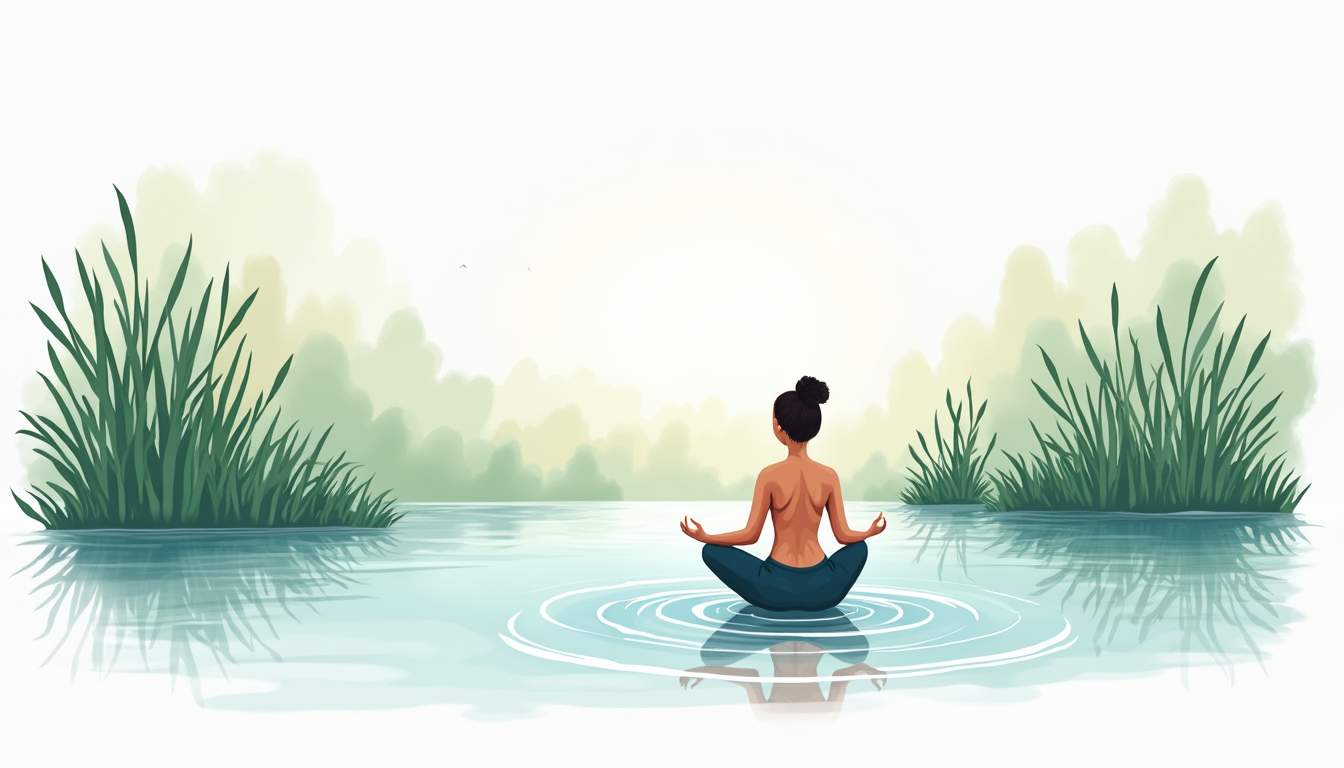
Embracing the rhythm of life by the water brings a unique set of opportunities for mental, physical, and emotional well-being. From brisk winter walks along frozen shorelines to long summer evenings spent paddling at sunset, waterside living invites a gentle recalibration of pace, priorities, and practices. The seasons change, but the benefits of waterfront routines remain consistent when attention is paid to adaptability, safety, and intentional care.
Water influences the body and the mind in ways that are both subtle and profound. The sound of waves or ripples can decrease stress hormones, slow breathing, and promote relaxation. Visual access to water provides a focal point for meditation and presence, while movement near water—walking, swimming, rowing—delivers low-impact exercise that supports cardiovascular health and joint mobility.
Beyond physiological effects, waterside environments nurture social connection and community. Parks, boardwalks, and marinas become natural gathering places where conversations unfold more easily, and outdoor activities translate into regular, pleasant opportunities for movement. This social and active mix helps sustain healthy habits across seasons.
Moreover, the presence of water often encourages mindfulness, inviting individuals to engage their senses more fully. The gentle lapping of water against the shore, the shifting play of light on the surface, and the fresh, invigorating scent of moisture in the air all serve to heighten awareness and foster a meditative state. These sensory experiences can anchor people in the present moment, which is a key component in reducing anxiety and enhancing emotional resilience.
Additionally, waterside wellness supports ecological appreciation and stewardship. As people spend time by rivers, lakes, and oceans, they tend to develop a deeper respect for these natural environments, which encourages environmentally conscious behaviors. Educational programs and community clean-up events along waterfronts further bolster this connection, combining wellness with purposeful engagement that benefits both individuals and the ecosystem.
Maintaining a year-round wellness routine near water requires planning that aligns with changing weather, daylight, and safety considerations. Each season offers distinct advantages and challenges; the key is to turn potential obstacles into invitations for new rituals and small adaptations.
Spring by the water is energetic and restorative. As temperatures rise and daylight expands, emergent greenery and migrating birds add to the sensory richness. This season is ideal for reintroducing outdoor activities after winter dormancy—gentle runs, brisk walks, guided nature observation, and early-season paddling when conditions allow.
Incorporate gentle mobility routines to prepare the body: dynamic stretches before walks, ankle and hip mobility drills, and short bodyweight sequences to rekindle strength. Social wellness also blooms; join a local walking group or volunteer for a shoreline cleanup to connect with others while supporting the local ecosystem.
Summer invites more vigorous activity and water-based recreation. Swimming, stand-up paddleboarding, kayaking, and longer bike rides along waterfront paths become accessible and enjoyable. Hydration and heat management are critical—choose cooler parts of the day for intense workouts and apply sun protection consistently.
Mindful cooling practices help preserve energy and reduce heat-related stress. Swim intervals followed by shaded rests, barefoot walks on dewy grass at dawn, or sunset yoga on a pier can balance exertion with restorative pauses. Planning for safe access to water—knowing currents, temperature, and lifeguard schedules—keeps summer adventures both fun and secure.
Autumn’s crisp air and changing foliage create an atmosphere well-suited to contemplative movement and recalibrated routines. Longer hikes along the shoreline, brisk walking circuits, and early-morning tai chi sessions take advantage of cooler temperatures. This season also supports a transition toward grounding foods—root vegetables, whole grains, and warming broths that help maintain energy as daylight wanes.
Embracing layered clothing and flexible scheduling allows activities to continue unaffected by sudden temperature shifts. Consider pairing physical outings with seasonal mindfulness practices: simple breathwork while watching migrating birds, or a gratitude ritual at the water’s edge to mark the shift from abundance to consolidation.
Winter waterside routines emphasize resilience more than intensity. Shorter daylight and colder temperatures necessitate safety-minded approaches: dress in moisture-wicking layers, protect extremities, and follow local guidance about frozen surfaces. When water activities are limited, focus on indoor complements that preserve mobility and cardiovascular health—pool sessions, indoor rowing, or thermostatically controlled studio classes.
Even in cold months, connecting with the water visually or audibly can be grounding. A brisk walk to watch the light on the frozen surface, a cozy bench moment with hot tea, or a short breathing practice that centers attention on the sound of distant waves helps maintain the emotional benefits of the waterside. Social continuity—regular check-ins with a walking buddy or a weekly virtual class—reduces isolation during winter’s quiet stretch.
Consistent waterside wellness depends on small, practical choices that prioritize safety and comfort. These choices multiply over time, creating a resilient foundation for ongoing health.

Layering is the cornerstone of comfortable waterfront outings. Base layers that wick moisture, insulating mid-layers, and windproof or waterproof outer shells enable quick adjustments to shifting temperatures and breezes. Footwear with good traction prevents slips on wet surfaces, while hats and gloves protect against heat loss in cold weather.
Understanding local water conditions reduces risk. Learn about tides, currents, seasonal hazards, and wildlife patterns. Check forecasts and advisories before heading out, and choose locations appropriate to skill level—calmer bays for beginner paddlers, lifeguarded beaches for swimmers, and well-maintained paths for walking or running.
Hydration is essential year-round but especially in summer and during physical exertion. Bring a refillable bottle and replenish electrolytes when sweating heavily. Nutrition should support activity level and climate: lighter, cooling meals in heat and nutrient-dense, warming foods in colder months. Pack simple snacks for long outings to maintain energy and mood.
A small kit can make a big difference: a whistle, a compact first-aid kit, a phone in a waterproof case, and a headlamp for low-light conditions. For watercraft activities, wear appropriate personal flotation devices and review emergency protocols. These precautions allow activities to continue with confidence across seasons.
Beyond exercise and safety, intentional practices deepen the restorative capacity of waterside time. These activities are simple to integrate and can be adapted for any season, enriching both short visits and longer rituals.

Conscious breathing exercises synchronize well with the natural rhythm of water. Techniques such as box breathing or gentle diaphragmatic inhalations reduce stress, lower heart rate, and improve focus. Listening to the sound of waves, rain on the surface, or flowing currents anchors attention and enhances the calming effect of breathwork.
Walking meditation transforms a familiar activity into a mindfulness practice. Focus on the sensation of each step, the feel of the ground underfoot, the temperature of the air, and the chorus of nearby birds. This practice fosters presence and can be done in brief intervals or extended sessions, depending on time and energy.
Keeping a brief waterside journal highlights changes across the year and nurtures gratitude. Notes can include observations about weather, wildlife sightings, personal feelings, or small goals for upcoming outings. Reviewing entries across seasons reveals patterns—preferred routines, emotional shifts, and meaningful habits—guiding gentle course corrections.
Long-term wellness thrives when routines are realistic, flexible, and enjoyable. A sustainable plan balances frequency, variety, and progression to prevent burnout and maintain motivation.
Rather than ambitious, vague resolutions, choose clear and attainable aims: three 30-minute waterfront walks per week, a weekly paddling session during warmer months, or a daily five-minute breathing practice by the shore. Concrete goals make progress trackable and encourage consistency without pressure.
Variety reduces overuse injuries and keeps enthusiasm high. Rotate walking, swimming, strength work, and balance training across the week. Seasonal rotations—emphasizing swimming and paddling in summer, and strength and mobility indoors in winter—align activity types with environmental conditions.
Joining local clubs, classes, or informal groups creates social incentives to maintain routines. Shared events—sunrise walks, volunteer cleanups, or communal picnics—foster belonging and expose participants to new ideas for enjoying the water safely and respectfully.
Waterside wellness is inseparable from environmental stewardship. Healthy ecosystems support recreation and contribute to overall quality of life. Protecting shorelines and waterways thus becomes an act of self-care that benefits present and future communities.

Minimizing disposable plastics, using refillable containers, and participating in local beach or river cleanups keeps habitats safe for wildlife and people. Small changes—bringing a reusable tote, choosing biodegradable sunscreen, or securing gear to prevent accidental litter—add up over time.
Native plants stabilize shorelines, improve water quality, and provide habitat for birds and pollinators. Engaging with restoration projects or choosing landscaping that favors local species helps maintain resilient, diverse waterfront ecosystems that are pleasurable to visit year-round.
Equitable access to waterways enhances community health. Supporting policies that improve safe pathways, lighting, seating, and waste management helps ensure that more people can enjoy the benefits of waterside wellness. Advocacy can also prioritize educational programs that teach safety, conservation, and respectful use of shared spaces.
Waterside wellness is a living, adaptive practice rather than a fixed regimen. By aligning activities with seasonal realities, prioritizing safety and comfort, embracing mindful rituals, and protecting the places that inspire movement and reflection, health routines can persist and deepen throughout the year. Small, consistent choices—dressing appropriately, planning for hydration, rotating activities, and engaging with community—build resilient habits that sustain both individual well-being and the vitality of local waters.
Whether the shoreline serves as a daily escape, a weekend destination, or a seasonal retreat, intentional planning and a spirit of curiosity invite ongoing discovery. The water remains a quiet teacher: reminding that change is constant, presence is powerful, and the simplest practices often yield the most lasting benefits.
Embrace a lifestyle where waterside wellness is part of every day. At Tennessee National, experience luxury living in a premier gated community set against Tennessee’s stunning natural beauty. Enjoy waterfront dining, a private marina, scenic trails, and a Greg Norman Signature Golf Course—all designed to enhance your connection to the water and nature year-round. Whether seeking a move-in ready home or custom build, make Tennessee National your retreat for health, relaxation, and community. Schedule a private tour today and start living the wellness journey you've envisioned.